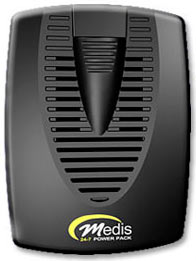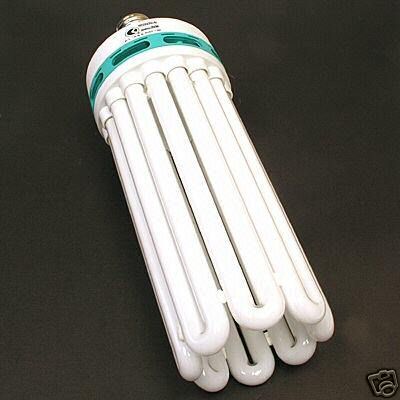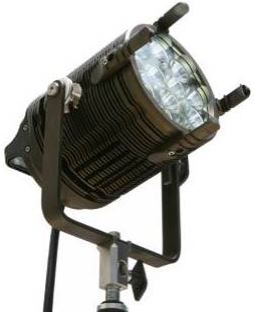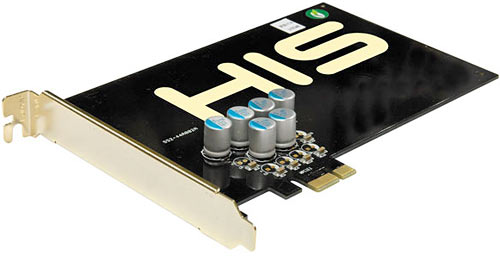"A Temple University physics professor has developed a simple device which could dramatically improve fuel efficiency as much as 20 percent", says this report on PhysOrg.com.
A couple of readers pointed the report out to me, observing that at least this one doesn't claim to be using reverse-spin antiunicorn particles, magnetising the unmagnetisable, or cracking water into hydrogen and oxygen then reacting them to somehow give more power than went in.
Next, the report turned up on Slashdot, and some more readers pointed it out to me. These readers were less complimentary.
Once again, yet again, this gadget is supposed to give "more efficient and cleaner combustion". This is apparently because the fuel's viscosity is reduced by an electric field, but it doesn't matter how the heck the "more efficient combustion" happens, because there's almost no room for improvement there.
As regular readers who've been subjected to my snowstorms of links to Tony's Guide to Fuel Saving will already know, modern engines in anything vaguely resembling a decent state of tune only fail to burn a few per cent of their fuel, at the very most.
If you're only blowing 2% of the fuel out of the exhaust valve in the first place, improving combustion can only gain you a maximum economy and/or power increase of that same 2%.
If a fuel-saver inventor bothers to address this unfortunate fact, they usually start banging on about how functionally all of the fuel might be getting burned in the engine, but their invention makes it burn faster, or more evenly, or something.
I am pleased to say that no such nonsense is being put forward by the inventors of this latest gizmo. They're streets ahead of most of the other purveyors of magnets and crystals and stickers and mothball pills, for one reason: These people are actually doing proper science. They have written up and published their research. And they're not selling anything.
You just don't see this sort of... honesty... from most mileage-gadget inventors. These guys are telling the world exactly what they did, and inviting replication of their results. This is what proper scientists always do, but it's almost unknown in the mileage-gadget world. The closest mileage-gadget people usually get is encouraging hundreds of dudes in garages to all try to finally make the first Joe Cell that actually works.
The Temple University paper is titled "Electrorheology Leads to Efficient Combustion"; it was published in Energy & Fuels, a journal of the American Chemical Society. The whole paper is available online. It's only four pages, so I read it.
I don't know whether their basic idea - that applying an electrical field to fuel actually does reduce its viscosity - is correct. They say that this definitely does work on liquids which contain suspended particles, and that the larger molecules in gasoline or diesel fuel can be regarded as (very small) suspended particles. That sounds fishy to me - molecules do not, of course, behave at all like normal visible-under-a-microscope "particles" - but the paper contains a neat graph in which a sample of diesel apparently did decrease in viscosity, from 4.6 centipoise to as little as 4.2, after electrical treatment.
(I'm assuming that they kept the fuel's temperature steady. All sorts of petroleum products become less viscous when you warm them up, and their electrical gizmo will slightly warm the fuel. But only an idiot, or scammer, would fail to control for temperature in this situation.)
If their gizmo really does reduce fuel viscosity, then it's uncontroversial that it'll also improve atomisation when the fuel's squirted out of an injector in a diesel or fuel-injected petrol engine. They tested for this anyway, and got positive results.
But now we strike a problem. Devices to improve fuel atomisation are not new. They've been around for ages. And, as Tony points out on the above-linked page, even if the fuel is a vapour when it's introduced into the combustion chamber - if it's petrol that's been pre-heated by a fuel-saving gizmo, or if the engine's running on LPG or CNG - there's only a very small efficiency gain, if any at all.
According to the paper, the inventors of the electrorheology viscosity doodad tested it on a diesel engine in a lab for a whole week, and got readily measurable economy and power gains. Then they tested a Mercedes 300D on a dynamometer, and again got a clear improvement - though they say the power output improved from an average of "0.3677 hp" to "0.4428 hp", which suggests they've either slipped a decimal point or there's some large divisor here that I'm missing. The engine would be producing substantially more power than that even if it was only idling.
(They say, by the way, that their device ought to work just as well on petrol engines as on diesel. They've only tested it on diesel so far, though. The worthless atomisation-improvers on the market today are almost always for petrol engines.)
After that, the paper says they did "continuous road tests" on the same Mercedes and found even better improvements - 12 to almost 20% better mileage. But just driving a car around is, of course, not a proper test. There's just no way for a person driving a car to drive it exactly the same way every day, and people can very easily unconsciously drive more gently when they're all excited about the new fuel-saving thingummy they just installed.
You could maybe get some better-than-nothing data if you blinded a driving-around test - nobody driving the car knowing whether your doodad was operating or not - but the paper doesn't say they did that.
The paper as a whole, though, looks almost entirely kosher to me. It seems that these people really did this stuff, and really got these results. The very low 300D dyno power figures concern me - they don't seem to make any sense at all - but that's the only part of the paper that looks really dodgy.
Research like this is all about replication - other people reading the paper and then performing the same experiment. This irons out the effect of errors and dishonesty, and over time leaves us with the truth, or as close to it as we can get. Anybody who wants to can duplicate the Temple University experiment; the electrifier device should be very easy to build, and it contains no exotic materials or physics-defying woo-woo components.
But it seems to me that the electrifier's claimed means of operation, at the very least, can't be right. Improving fuel atomisation just doesn't improve combustion, or anything else. Modern petrol and diesel engines already atomise fuel as well as is necessary, and burn very nearly all of it at the right time, in the right place, and at the right speed.
If this device actually does work - and it'd be fantastic if it did - it seems to me that it must be for some other reason.
UPDATE: When I first wrote this piece, I missed the end of this press release, which mentions that the new electronic viscosity device has already been "licensed" to an outfit called "Save The World Air".
STWA's current mainstay product appears to be the "MagChargR", which looks to me like an entirely straightforward magnetic "fuel saver". The Temple University researcher who's come up with the new electronic viscosity doodad appears to be involved up to his hips in STWA. This immensely reduces my opinion of him and of the value of his research. It seems clear to me now that he is actually in this for the money, even if he has published his method and results.
(The STWA test-results page, tellingly called "testimonials.htm" gives you the usual collection of hard-to-trace allegedly-independent tests to support the claims made by the company. As usual, in order to see if the tests are actually kosher you'd need, at the very least, to check with testing outfits identified only by a cryptic name {"CP Engineering", no Web site, address or phone number given}, or located in non-English-speaking countries - in this case Thailand and China. Or just believe the pretty graphs, which contain no information about their provenance at all.
I've taken plenty of time to look into this sort of stuff before, and I'm sick of it. Screw every single God-damned one of these people with their devices that'd be worth hundreds of millions of dollars a year if they actually bloody worked but which, strangely, they've never taken the time to have properly tested by contactable organisations in the countries where they do business.)
Unlike most magnetic fuel gadgets, the MagChargR goes around the carburetor or fuel-injection equivalent rather than being clamped to the fuel line. But, as has been demonstrated from the level of quantum physics up over decades, if not centuries, hydrocarbons are just as immune to magnetism no matter where you throw it at them. I'm pretty sure that magnets for every part of every engine have been marketed at one time or another. We'd probably know if they did anything (besides collect shavings in the bottom of the sump...) by now.
If the STWA device works as well as every other magnetic fuel saver anyone has ever tested, it does not work at all. This could explain why STWA was in 2002 enjoined by the Securities and Exchange Commission against making further fraudulent representations about their products and commercial prospects.
This action was resolved in the usual way: STWA settled out of court and didn't admit anything. It would appear that this event did not put a big dent in their business.
If I were selling a legitimate fuel-saving device, I would not choose to go into partnership with a company which, currently, proudly offers what looks to me exactly like an illegitimate fuel saving device.




